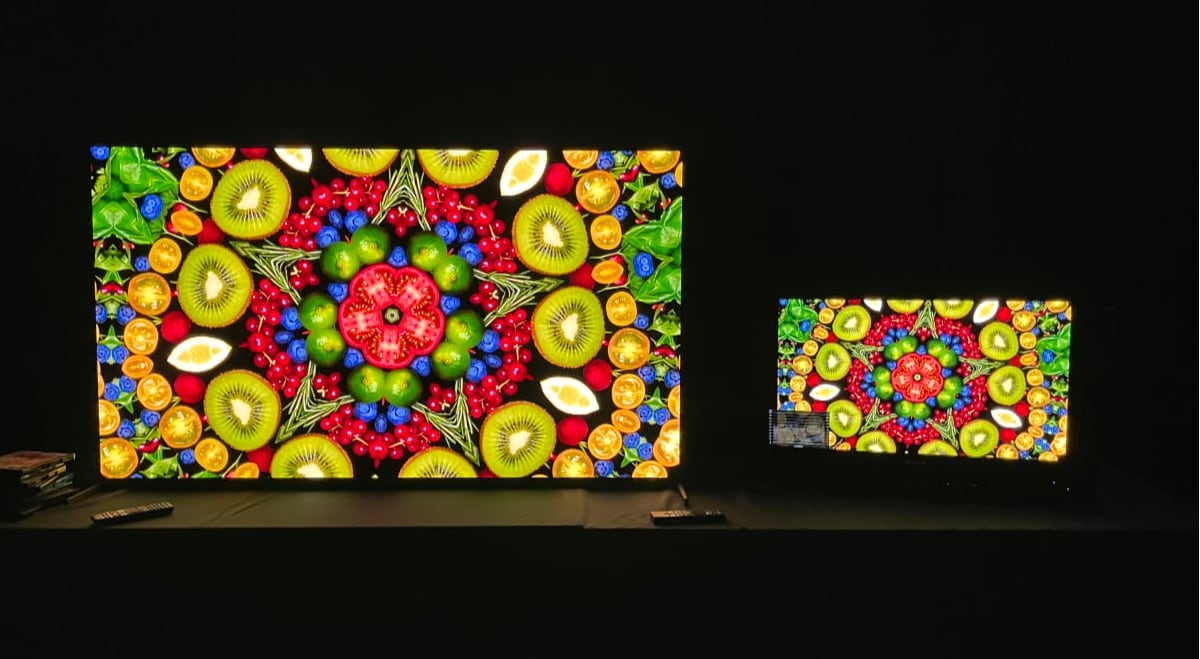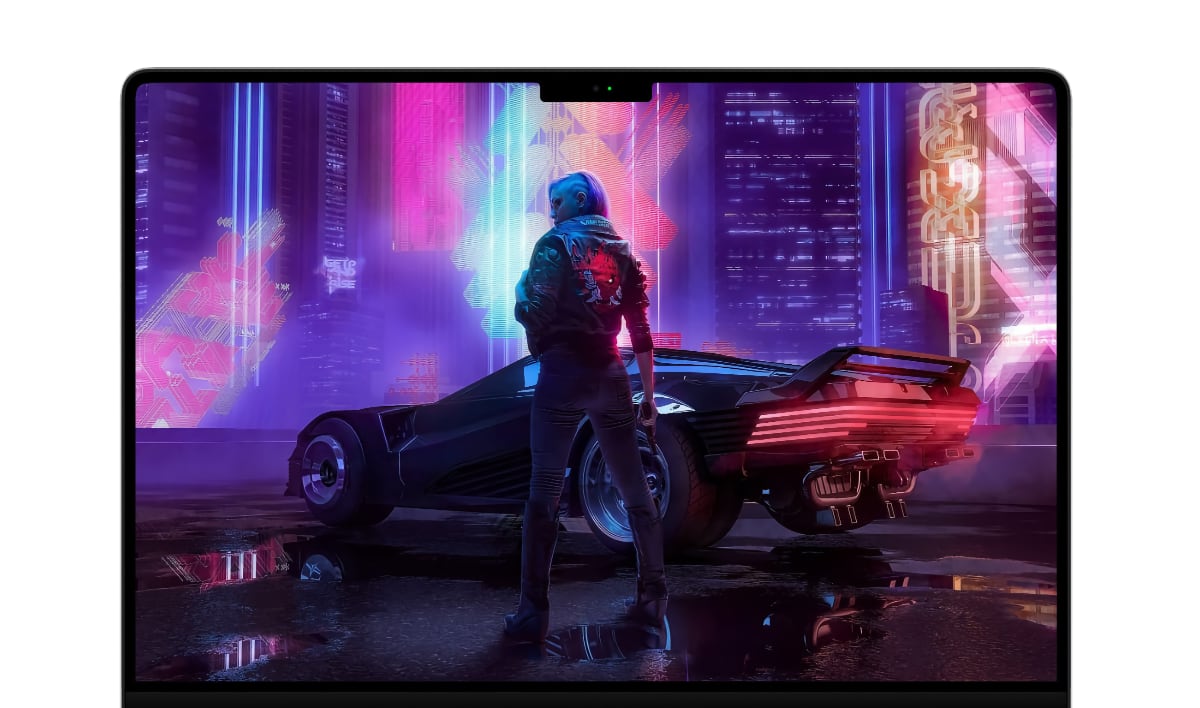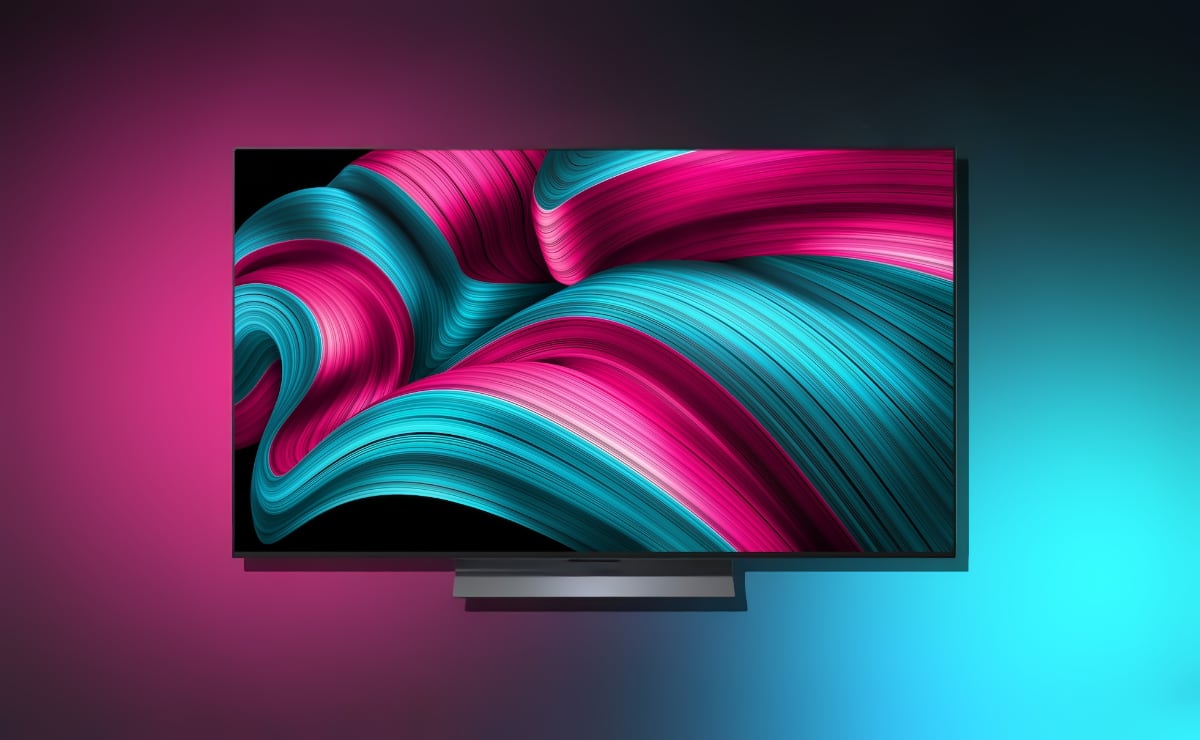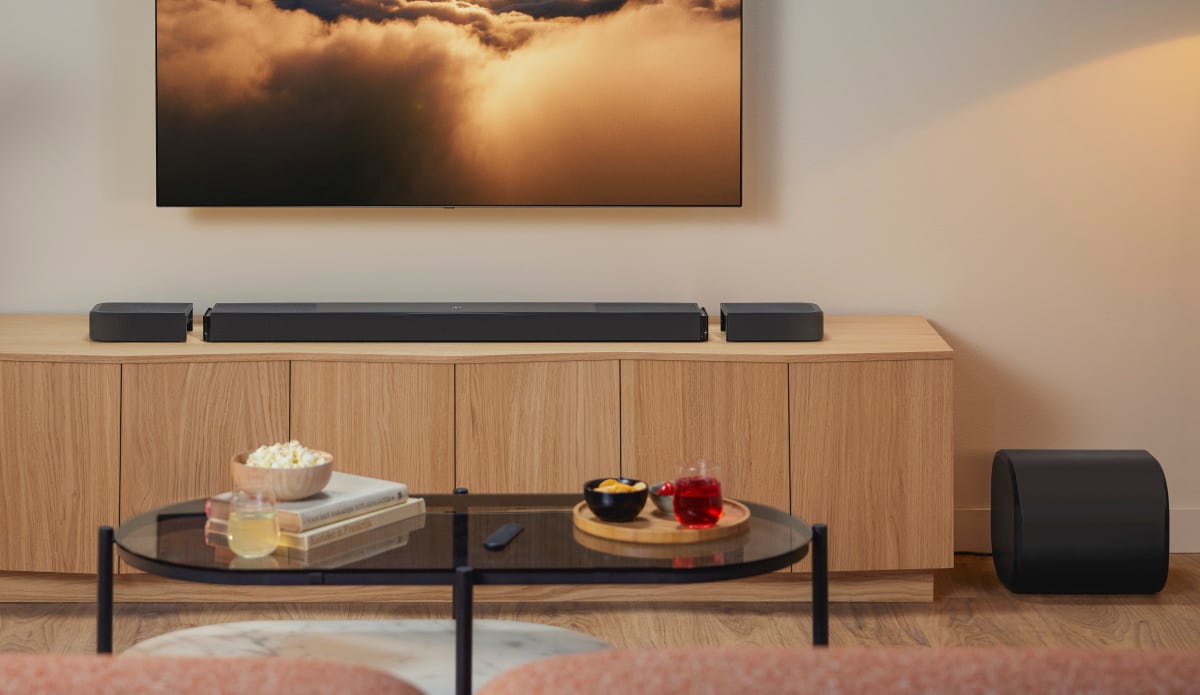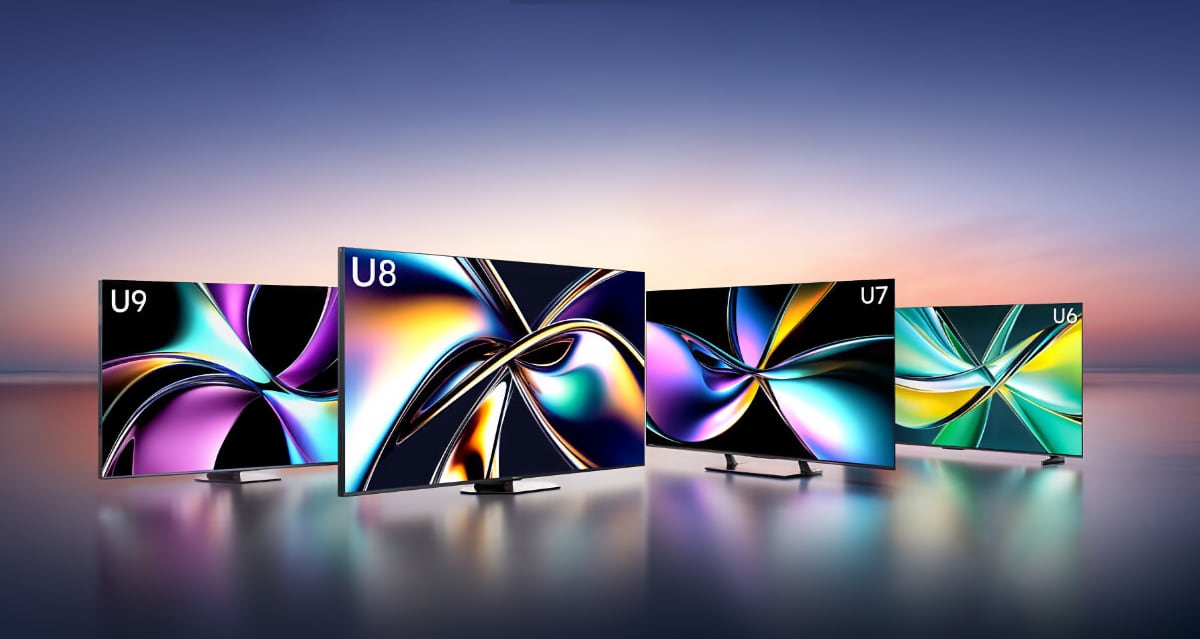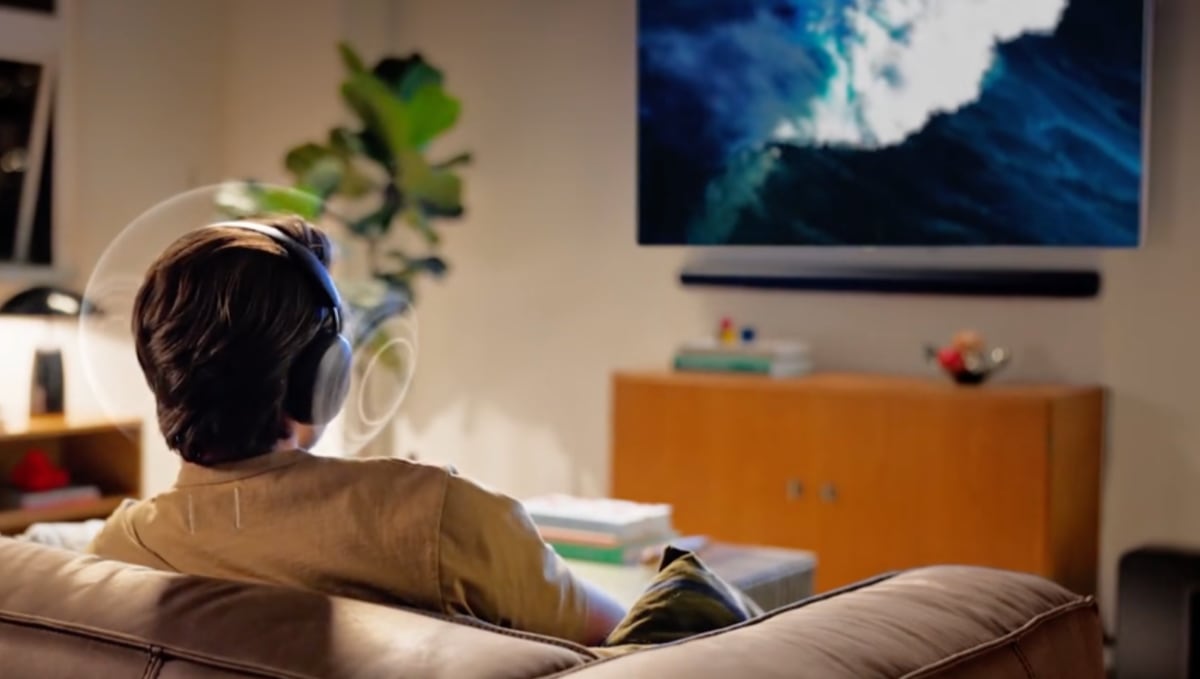Sony has today unveiled its 2025 TV line-up, including Bravia 8 II which is the QD-OLED successor to A95L, and Bravia 5 with 'XR Backlight Master Drive' (miniLED).
Sony’s promising RGB LED backlight technology is will not be ready until later, likely 2026, but for 2025 a successor to its best TV to date arrives in the form of Bravia 8 II, alongside the Bravia 5 miniLED LCD TV, and the Bravia 3 for Europe.
FlatpanelsHD has seen the new TVs in action. Below are our first impressions and key details. First, here is an overview of the 2025 models (click model names for the TV Database), with many 2024 models continuing:
| Bravia 8 II (XR80M2) | Bravia 5 (XR50) | Bravia 3 |
|---|
| Display tech | QD-OLED | LCD | LCD |
| Backlight | - | miniLED (XR Backlight Master Drive) | LED |
| Resolution | 4K | 4K | 4K |
| Hz | 120Hz | 120Hz | 60Hz |
| Processor | XR Processor | XR Processor | 4K Processor X1 |
| HDR | HDR10, HLG, Dolby Vision | HDR10, HLG, Dolby Vision | HDR10, HLG, Dolby Vision |
| OS | Google TV | Google TV | Google TV |
| Sony Pictures Core | | | |
| PS Remote Play | | | |
| Audio | Dolby Atmos, DTS:X, DTS:X IMAX | Dolby Atmos, DTS:X, DTS:X IMAX | Dolby Atmos, DTS:X, DTS:X IMAX |
| Speakers | Surface Audio+ | Acoustic Multi-Audio | |
| Design | Slim One Slate | One Slate | Flush Surface |
| Sizes | 55, 65" | 55, 65, 75, 85, 98" | 43, 50, 55, 65, 75, 85" |
FlatpanelsSony's new QD-OLED, Bravia 8 II
The new Bravia 8 II (pronounced mark 2) looks very promising with a 2025 QD-OLED panel and a slim, streamlined design. The best part? It will be more affordable, said Sony, which is why the company can bring down QD-OLED technology to the 8-series.
Sony said that Bravia 8 II is 25% brighter than A95L, which currently holds our Reference Award, and 50% brighter than the old Bravia 8 (WOLED), which will continue to be available. Since QD-OLED is RGB, you will also get a larger color volume – not just higher brightness.
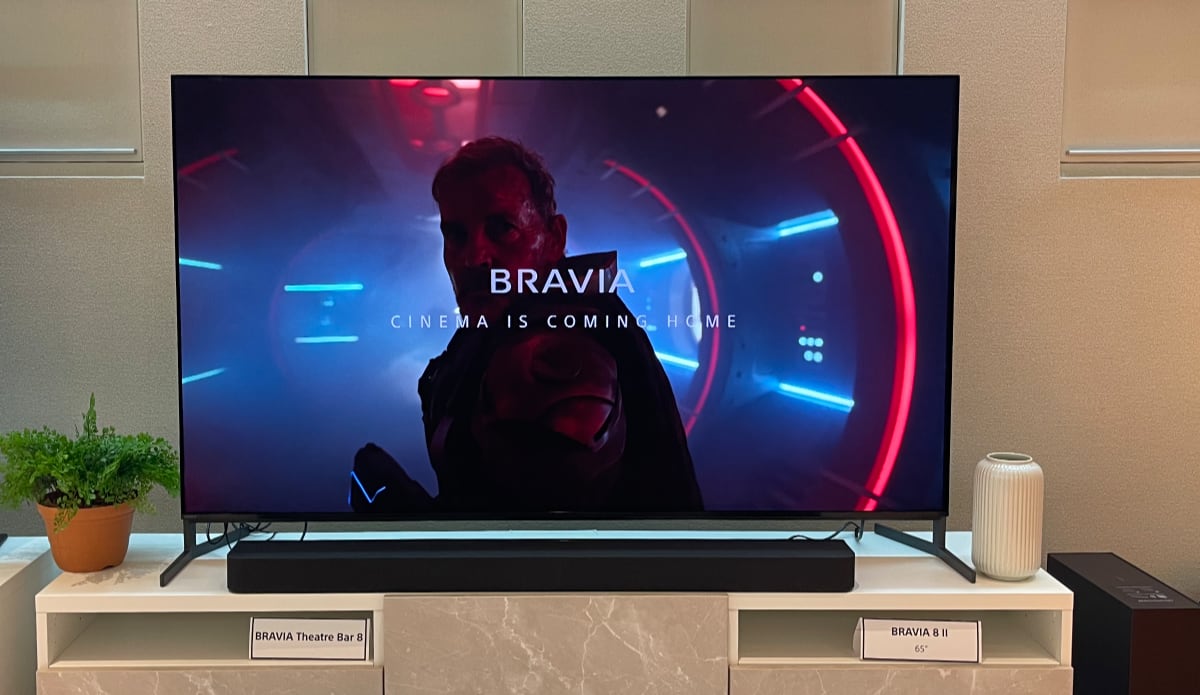
Sony's new QD-OLED TVs, Bravia 8 II. Photo: FlatpanelsHD
During a demonstration in Tokyo, Japan, attended by FlatpanelsHD, Sony compared Bravia 8 II to the Sony A95L (QD-OLED), Samsung S95D (QD-OLED), LG G4 (MLA OLED) and the $30,000 BVM-HX3110 reference monitor. Among the TVs, Bravia 8 II stood out with its high color volume and peak brightness. LG’s G4, due to its extra white subpixel, tended to lose some color vibrancy at high brightness, while Samsung S95D's matte coating sometimes affected the picture, and its tone mapping exhibited odd behavior. Based on what we saw, Bravia 8 II is shaping up to be one of the best TVs of 2025. However, some of the demos were in Vivid mode, so we look forward to testing a sample ourselves.
In a separate demo, where FlatpanelsHD had hands-on time with Bravia 8 II next to the HX3110, it was evident that Bravia 8 II does not reach the reference monitor’s 4000-nit peak brightness. However, in certain instances, such as tony bright stars taking up just one or a few pixels against a black background, it actually surpassed the HX3110 (a dual-layer LCD) in HDR picture quality. Another intriguing aspect is that Bravia 8 II – like other QD-OLED TVs – covers more of the Rec.2020 color space than HX3110. The challenge, however, is that Hollywood content is graded on the HX3110, meaning there is very limited content that fully utilizes QD-OLED’s potential.
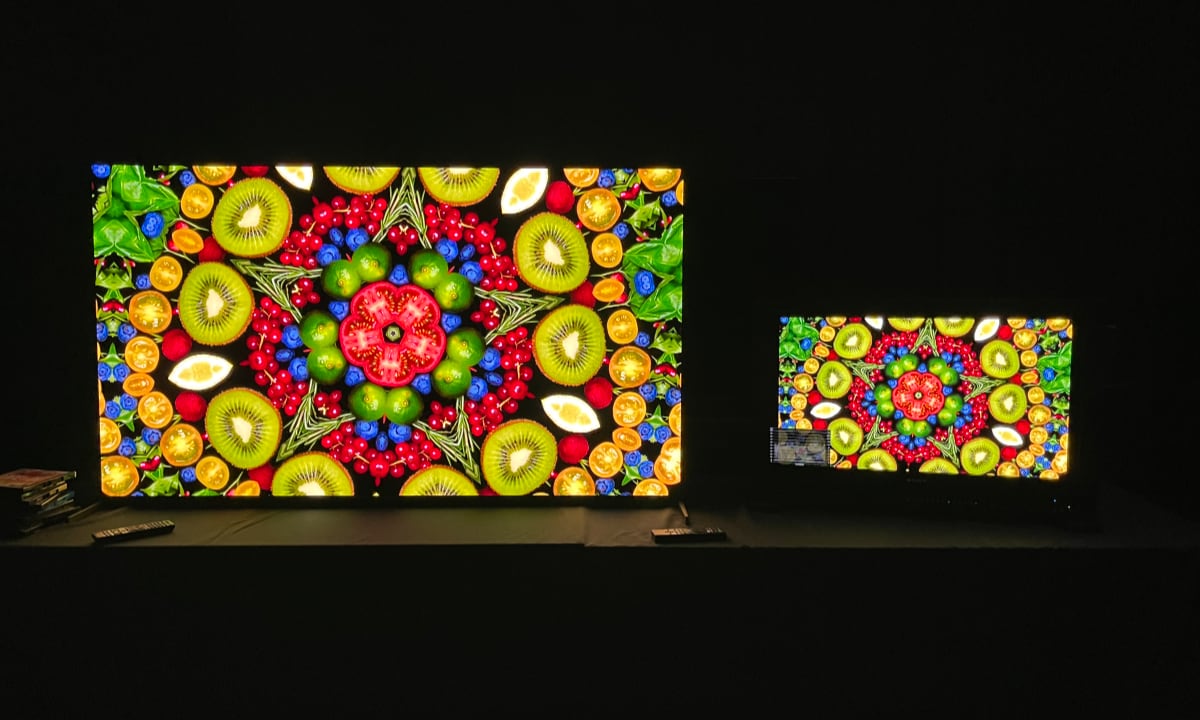
Left: Sony Bravia 8 II. Right: Sony BVM-HX3110 reference monitor. Photo: FlatpanelsHD
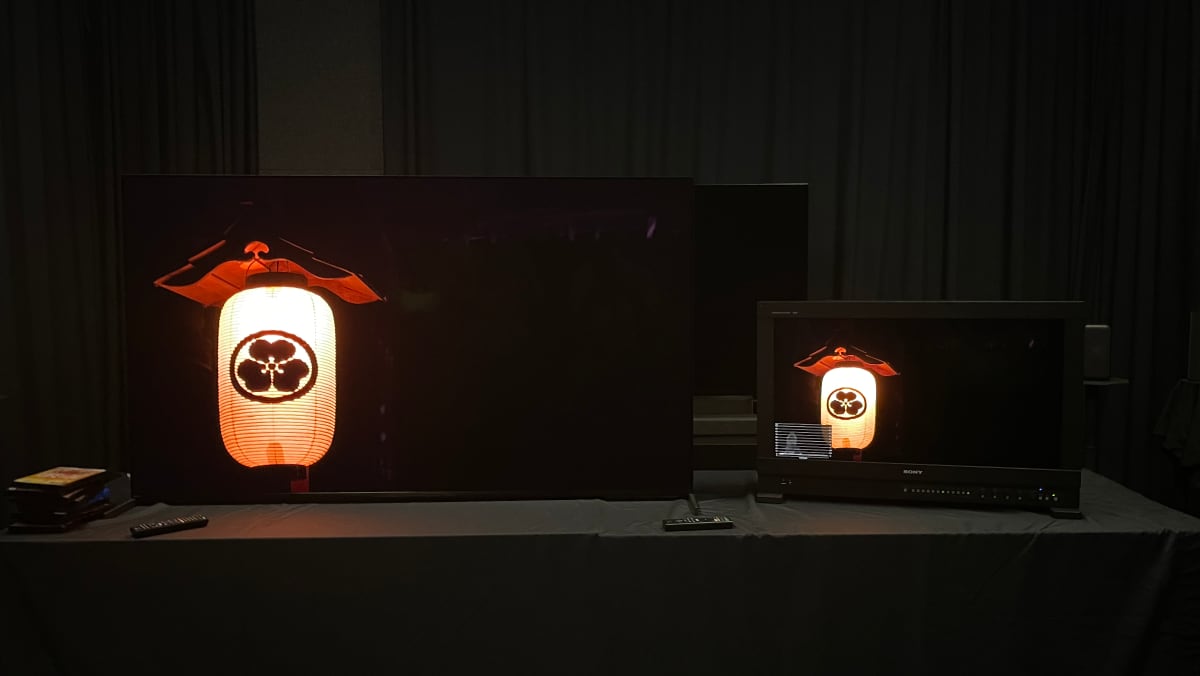
Left: Sony Bravia 8 II. Right: Sony BVM-HX3110 reference monitor. Photo: FlatpanelsHD
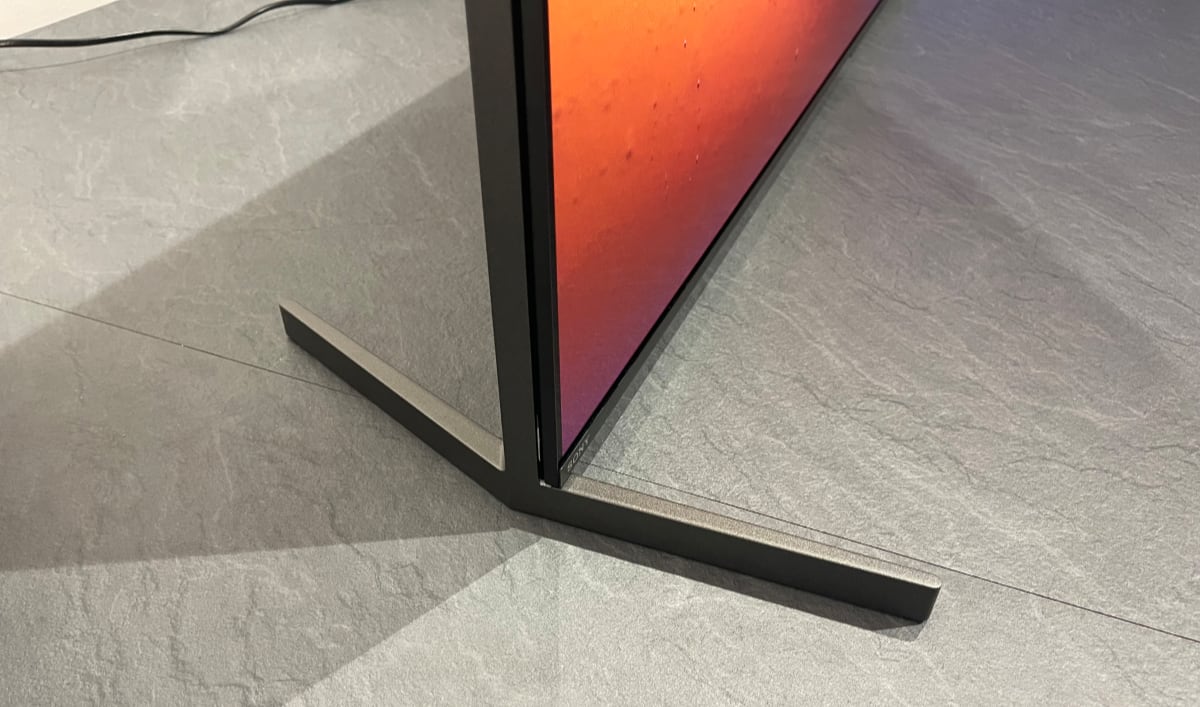
Left: Sony Bravia 8 II. Right: Sony BVM-HX3110 reference monitor. Photo: FlatpanelsHD
Beyond that, Bravia 8 II shares many similarities with A95L. Sony confirmed to FlatpanelsHD that it still uses the same XR Processor and that the built-in 2.2 speaker system remains largely unchanged, featuring Acoustic Center Sync and the ability to function as a center channel in a larger setup via either Acoustic Center Sync or the center channel input port. It also continues to run Google TV.
For now, the 77-inch A95L will remain in Sony’s line-up, as Bravia 8 II will launch exclusively in 55- and 65-inch sizes.
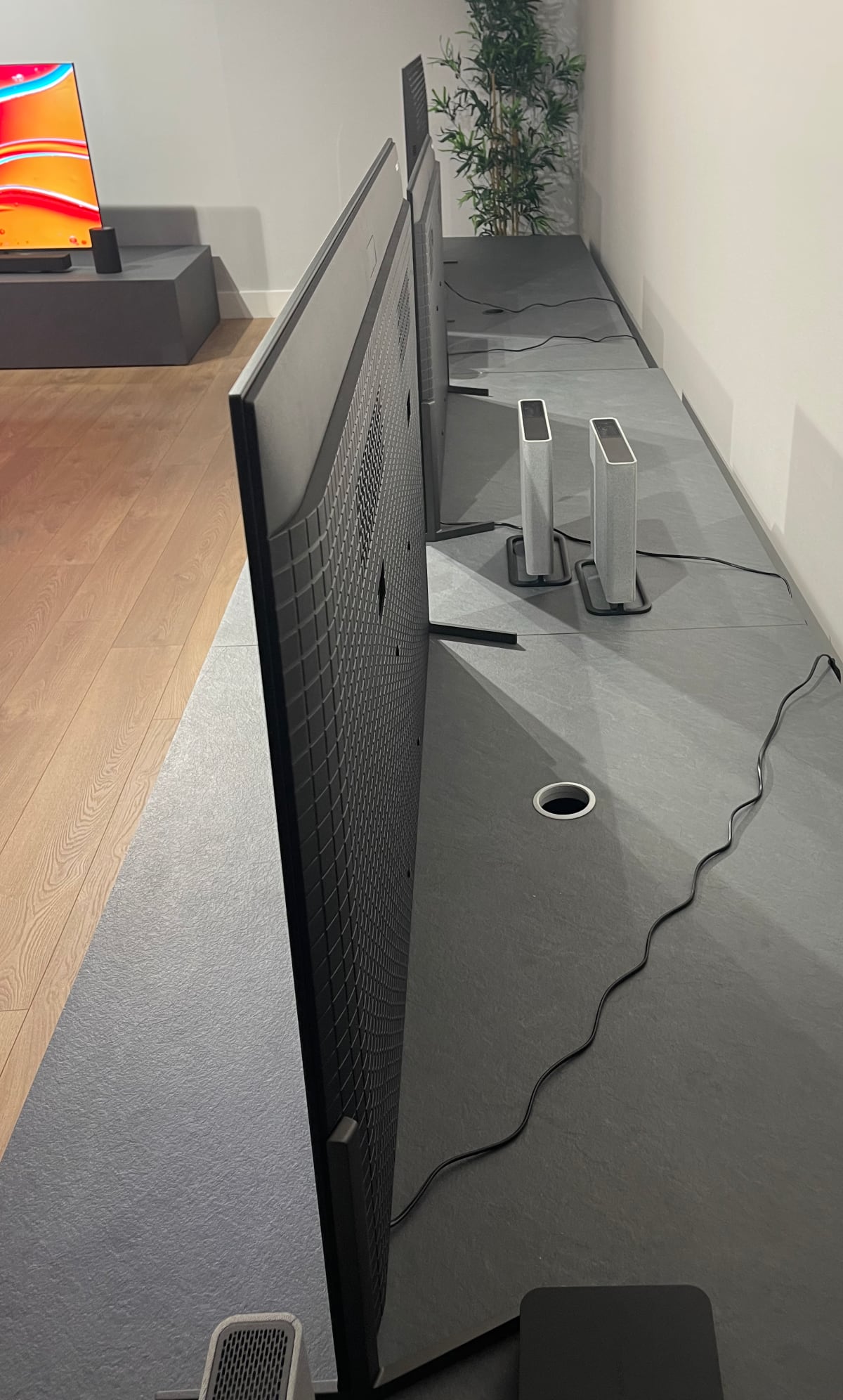
Sony Bravia 8 II from the side. Photo: FlatpanelsHD
Sony's Bravia 5 miniLED LCD
Sony is also launching the Bravia 5, a new range of miniLED LCD TVs available in sizes from 55 to 98 inches – its largest miniLED LCD models to date. Bravia 5 succeeds X90L.
Bravia 5 features Sony's XR Backlight Master Drive, the same miniLED technology found in Bravia 9. However, Bravia 5 has fewer dimming zones and is not as bright as Bravia 9 or Bravia 7. According to Sony, Bravia 5 has up to six times as many dimming zones as X90L, which had 96 zones in the 75-inch model.
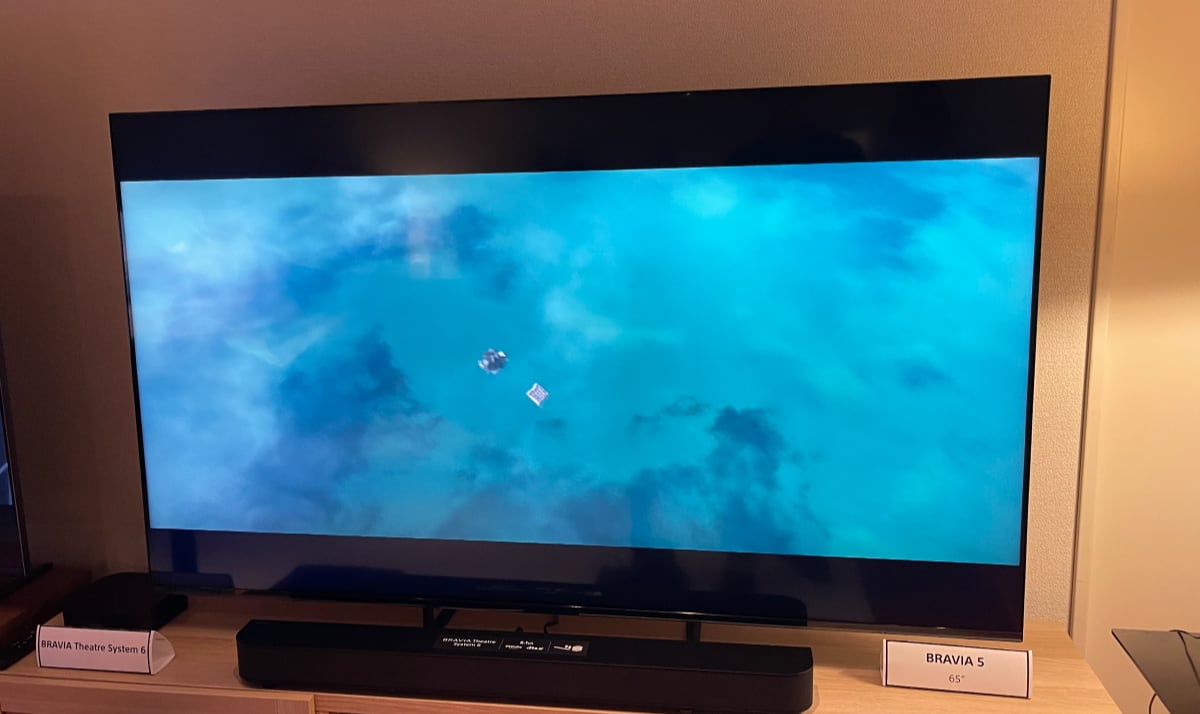
Sony Bravia 5. Photo: FlatpanelsHD
In a demo, Bravia 5 was compared to X90L and Samsung’s QN85D, handily outperforming both in zone control, contrast, color, black levels and HDR peak brightness.
Bravia 5 also includes many of Sony’s high-end features, such as HDMI 2.1 for 4K120, Voice Zoom 3, PS Remote Play, the Sony Pictures Core app, Dolby Vision and Atmos, and IMAX Enhanced DTS:X (supported on Disney+). Additionally, it supports Netflix Adaptive Calibrated Mode, Sony Pictures Core Calibrated Mode and Prime Video Calibrated Mode.
In addition, Sony is bringing Bravia 3 to Europe after launching it in the US last year. Bravia 3 is an entry-level LCD TV available in sizes ranging from 43 to 85 inches. An affordable Bravia 2 II will launch in the US.
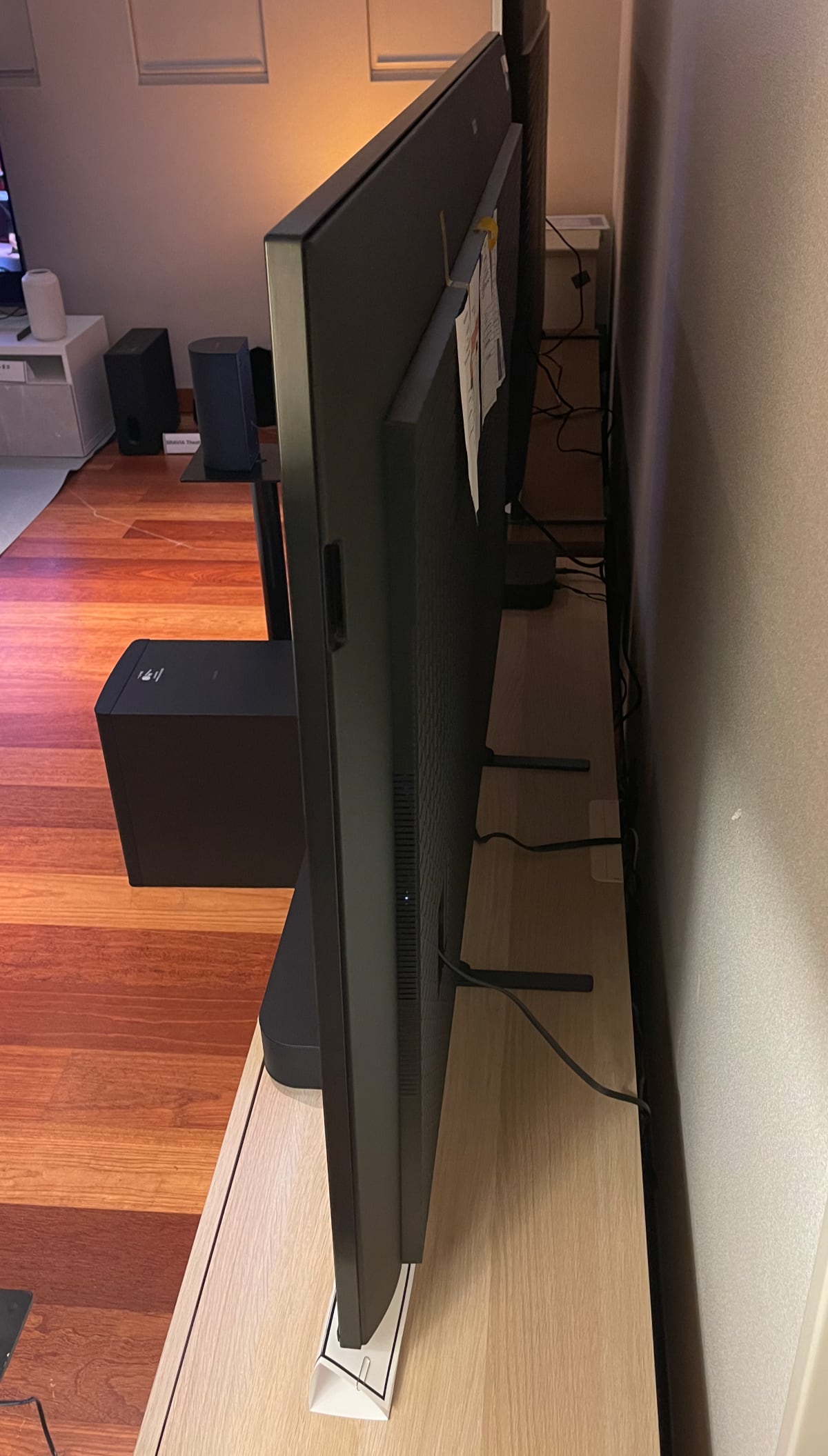
Sony's Bravia 5. Photo: FlatpanelsHD
Sony's 3-year strategy, 2-year cadence
With only two new TV ranges for 2025, Sony is continuing the Bravia naming strategy introduced in 2024.
Sony now refreshes most of its TVs every two years. For example, Bravia 9 (miniLED LCD), introduced in 2024, will remain available in 2025. This year, Sony is launching the new flagship Bravia 8 II QD-OLED TV as the successor to A95L. In 2026, Sony will introduce a new flagship LCD featuring its RGB LED backlighting technology. If you recall, at least Sony's high-end TVs have actually followed a similar pattern for years.

Left: 98" Sony Bravia 5. Middle: Sony Bravia 9. Right: Sony Bravia 8 II. Photo: FlatpanelsHD
Sony said last year’s Bravia name change is part of a 3-year plan called 'Cinema is Coming Home,' aimed at streamlining its TV line-up, as well as its projector and audio categories. The company added the Bravia names "will come to make sense" once the strategic shift is fully implemented in 2026.
As for what is missing, FlatpanelsHD asked Sony Japan several questions. Last year, Sony set 4000 nits as HDR's next frontier, but how close are we? Bravia 9 did not reach 4000 nits last year and neither will the new Bravia 8 II QD-OLED. However, Sony strongly suggests that its RGB LED technology for LCD TVs will achieve that goal next year.

Sony's TV line-up for 2025 includes has a lot of carry-over models from 2024. Photo: FlatpanelsHD
What about larger and smaller OLED TVs? The 42-inch and 48-inch A90K will remain available in some regions. As for 83-inch and larger OLED TVs, Sony’s decision to hold off is mainly due to high panel costs.
Sony will continue using the MediaTek Pentonic 1000 chip in its 2025 TVs, as the successor is not yet ready. This means that the TVs are still limited to two HDMI 2.1 ports. The new models will run Google TV on Android 12, and there are no changes to the Sony Pictures Core app (formerly Bravia Core).
Sony’s 2025 TVs will begin shipping this spring. Stay tuned in the coming days for more coverage on Sony.

